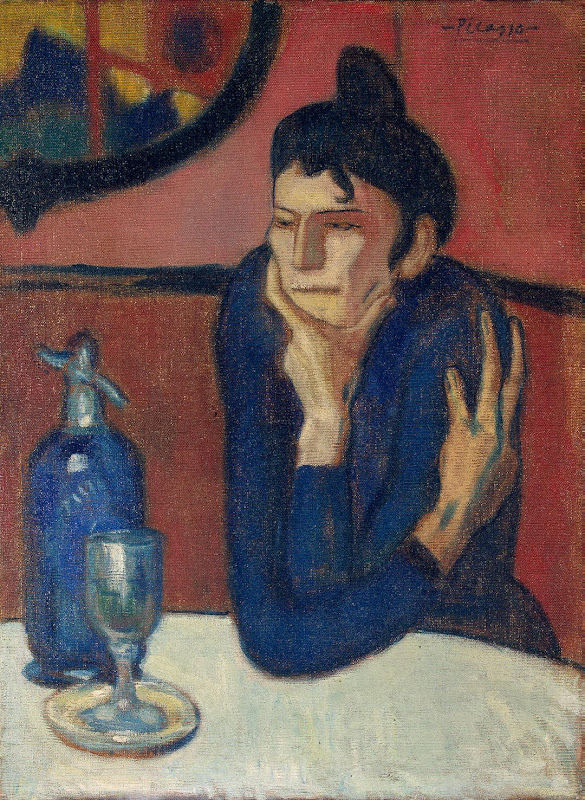Painting Detail
Absinthe DrinkerArtist: Pablo Picasso
Medium: Painting, Oil on canvas, 73x54 cm
Date: 1901
Genre: Genre Painting
Source: 1948
The work produced by Picasso in the autumn of 1901, during his second trip to Paris.
The theme of man's loneliness in a cafe, of isolation and emptiness, was not new to French art in the second half of the 19th century and could be found in the works of Degas and of Picasso's much-admired Toulouse-Lautrec. But in the paintings by the young Spaniard the theme acquired a previously unknown sense of drama.
Our lonely heroine sits at a table in a cafe, the background a dirty-red wall which reinforces the sense of discomfort. Emphasizing the flatness of the canvas, the colour of the walls and the bluish tone of the marble table seem to press the space inwards, around the woman, enclosing her in her hopeless loneliness. In the pose of the absinthe brinker, in her face, we can identify the outcast: the totally enclosed space of her body, the expressive distortion of the right hand, seem to indicate the tension of a coiled spring.
Picasso strictly boxed in the immobile face - the hand acts as a support, its precise perpendicular running through the imperfect oval of the figure, while a protecting hand clasps the shoulder. Everything reinforces the sense of inner tension and cuts the figure off from the world around. On the basis of real observations in a cafe Picasso created a generalised and timeless symbol of the tragedy of life.
On the back of the painting, concealed beneath heavy overpainting in blue and yellow, is a woman's head, probably a fragment of a work which did not satisfy the artist.
